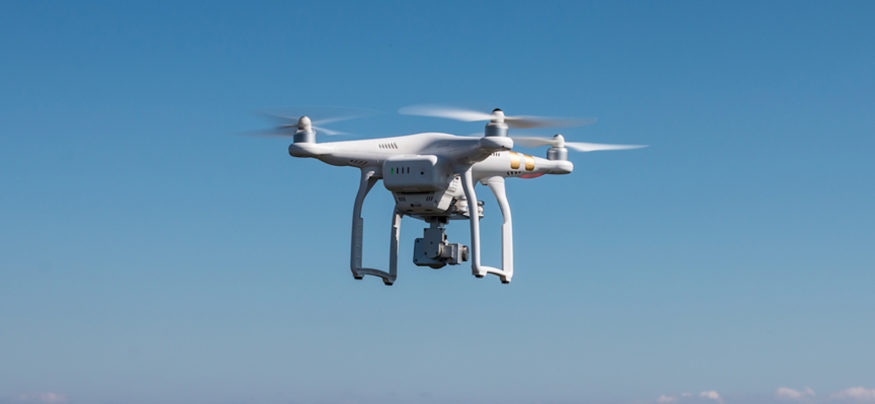Aviation has always been an industry that refuses to shy away from major innovations. The arrival of unmanned aircraft systems is no different, and recent technological advancements are now shaping the future of unmanned aircraft systems (UAS) in business.
One of the reasons UAS are so popular is that they’re becoming easier to operate in challenging environments. The small commercial UAS often used in business can trace their heritage back to remote-controlled hobby aircraft. In the beginning, small UAS were controlled much like RC airplanes and helicopters and required significant skill to operate. However, advances in UAS stabilization, autopilots, preflight planning tools, obstacle detection and avoidance technology have transformed these small aircraft into viable business tools.
In fact, UAS have become so easy to operate that The Business Journal predicts a prolific expansion in the number of UAS that will be flying in our skies in the coming years. In an effort to ensure that high-profile incidents don’t inhibit the advancement of UAS in the U.S., the government is now requiring that all UAS that weigh more than .55 pounds be registered, even if they’re to be used for non-commercial purposes. While it may seem extreme to be required to obtain a registration for a UAS that will be flown as a hobby, the operating guidelines and personal accountability associated with UAS registration will likely allow the continued rapid evolution of this industry, and will generally benefit businesses that want to leverage this technology in the future.
Several industries are emerging as UAS leaders. These industries tend to be composed of operators who need to access rapidly changing operational data in order to support critical decisions and workflows. The fact that UAS have low operating costs, rapid deployment capability and low barriers to entry benefit these industries. All of these factors combine to form a powerful business tool. Five industries that will be transformed by the addition of UAS technology include:
Emergency Response and Law Enforcement
During natural disasters or chaotic law enforcement events, UAS can be used by first responders to quickly assess threats in the environment. Cameras on the UAS send real-time video to operators, allowing for quick damage assessment, crime scene investigation and improved situational awareness. Specialized sensor packages can be quickly added to UAS to aid in explosive, radiation or Hazmat detection. Using UAS first in dangerous environments can help safeguard critical response teams as they enter hazardous environments.
Oil and Gas
The oil and gas industry is an early adopter of UAS technology. UAS fitted with infrared (IR) sensors can quickly detect a spreading oil or gas leak that might not be visible from the ground. Regular visual inspections of pipelines, flare stacks and storage facilities can be conducted more efficiently and cost effectively than traditional inspections. Many smaller companies are beginning to provide services to large energy providers to safeguard their existing infrastructures.
Environmental
UAS are also being widely used in environmental protection roles. UAS offer the ability to quickly and efficiently survey many square miles of terrain that might be inaccessible through terrestrial means. Low deployment costs and rapid redeployment allow operators to conduct repeated and continuous surveys, greatly improving the ability to detect change over time.
Utilities
Utility companies will be able to use UAS for many different types of inspections. Utility companies must regularly inspect their service corridors for obstructions, breaks and other hazards. During post-storm analysis, helicopters are sometimes used to assess damage, but they cost more than $1,200 per hour to operate and their operation may not be possible during inclement weather or in congested areas. UAS allow multiple operators to inspect sections of utilities infrastructure and quickly report on areas of concern.
Agriculture
Agriculture is an industry that will see immediate benefit from UAS. UAS and their sophisticated software packages can routinely monitor a crop throughout the season and detect problem areas quickly. Spot application of fertilizer and pesticide can significantly enhance crop yields, and growth-rate data throughout the year can aid in seed planning for the following season.
While all the potential use cases for UAS seem to focus on critical operations, it’s important to remember that what UAS truly produce is data — and lots of it. Many operators confess that in practical application, UAS produce more data than a human can analyze effectively. Much development is now focused on creating methods to process UAS data on board, and only alert users of potential threats so that those threats can be managed properly.
While the regulatory framework for autonomous UAS deployment is still being developed, companies should begin to consider how their expertise might be used to support the burgeoning UAS industry. UAS will power a mobile workforce that will be able to move and act quickly during critical events. Software and hardware companies should look to improve the flow of communication between employees, since data from UAS will need to be carefully analyzed to properly plan for — and act upon — changing environments.
Comply365 works to guide enterprises in the development and deployment of unique business solutions. When Comply365’s complete suite of mobility products is deployed, managers can be assured that front-line employees are always in touch with the latest operational data, corporate policies and critical internal communications.








